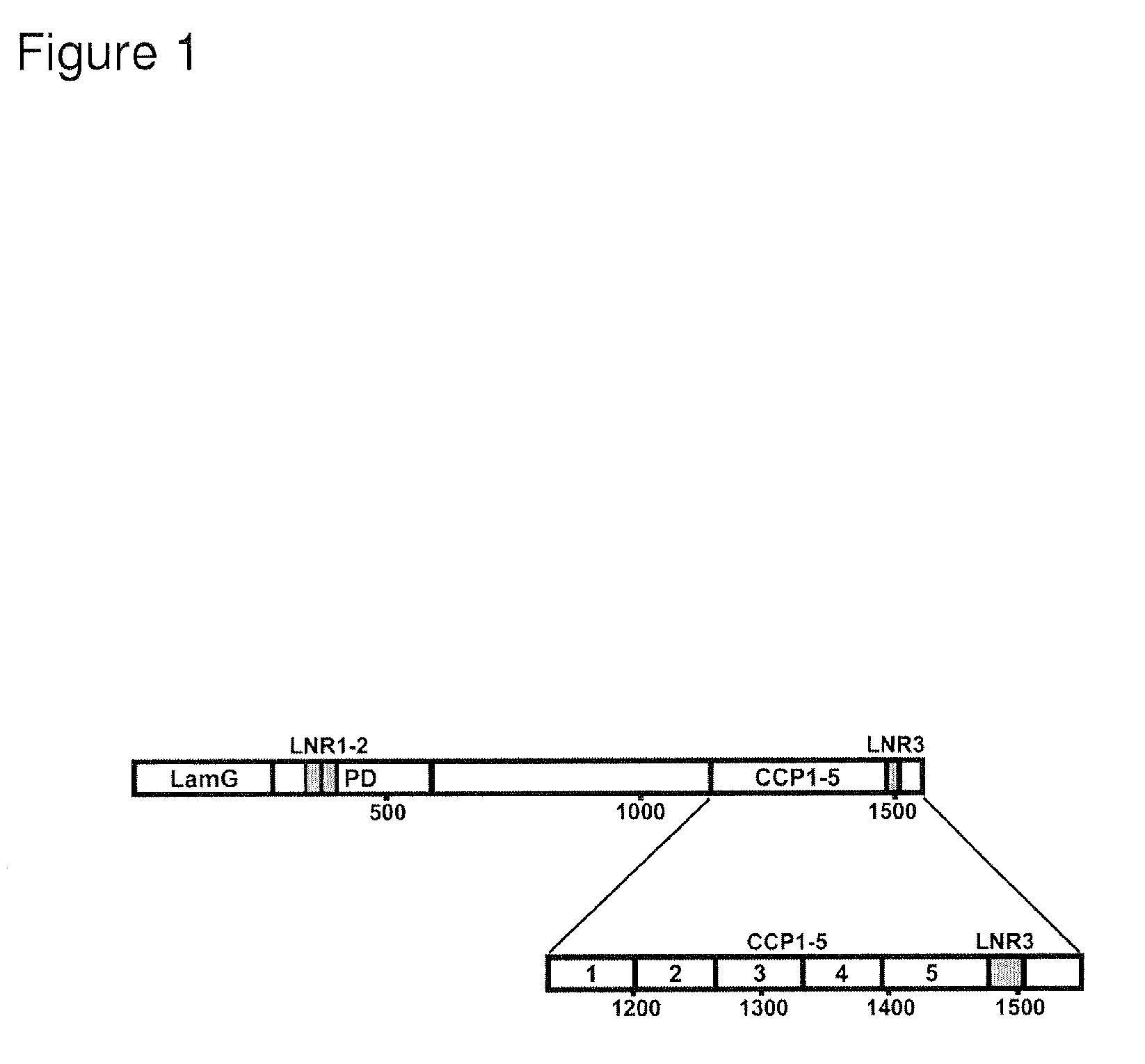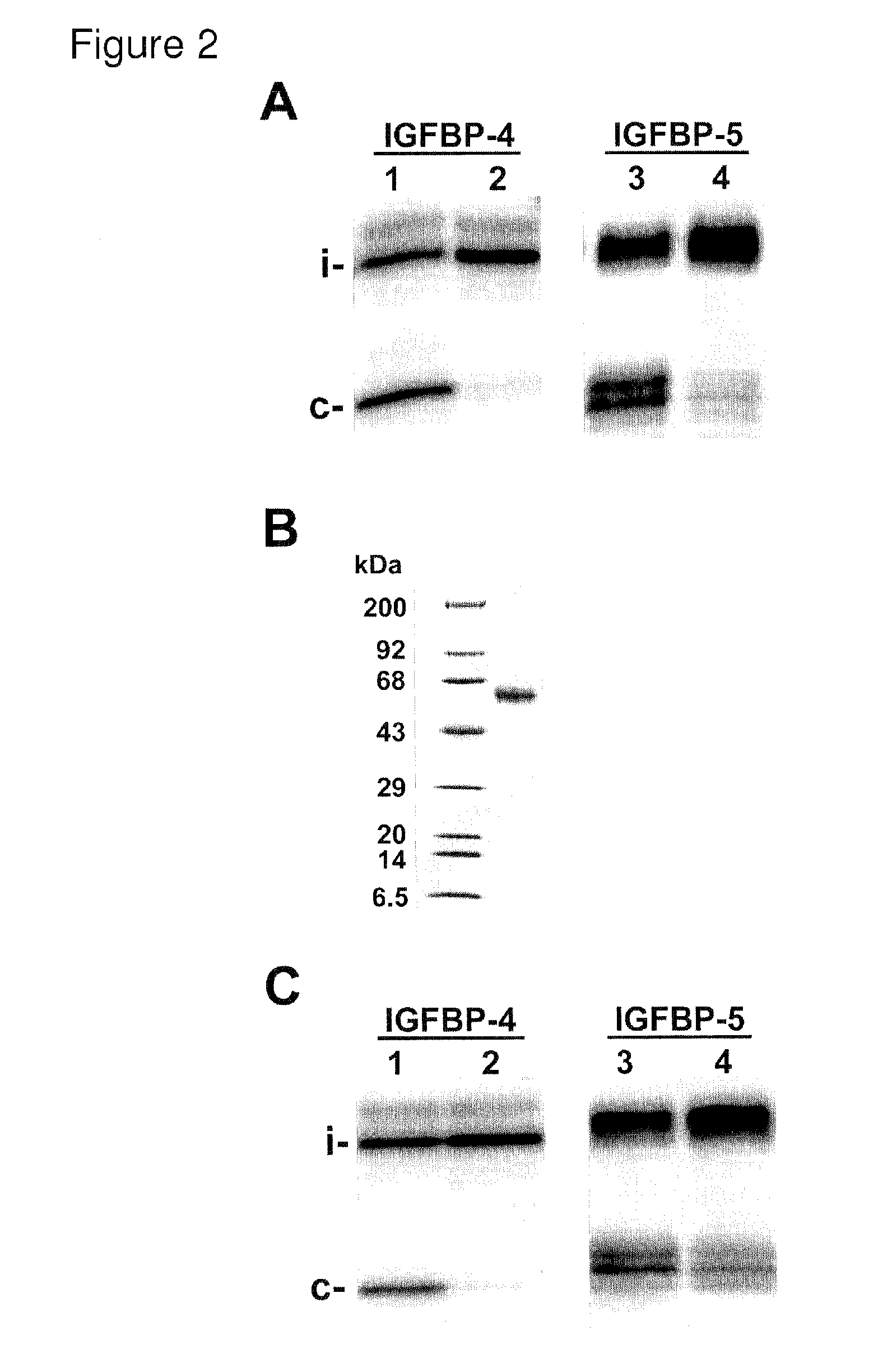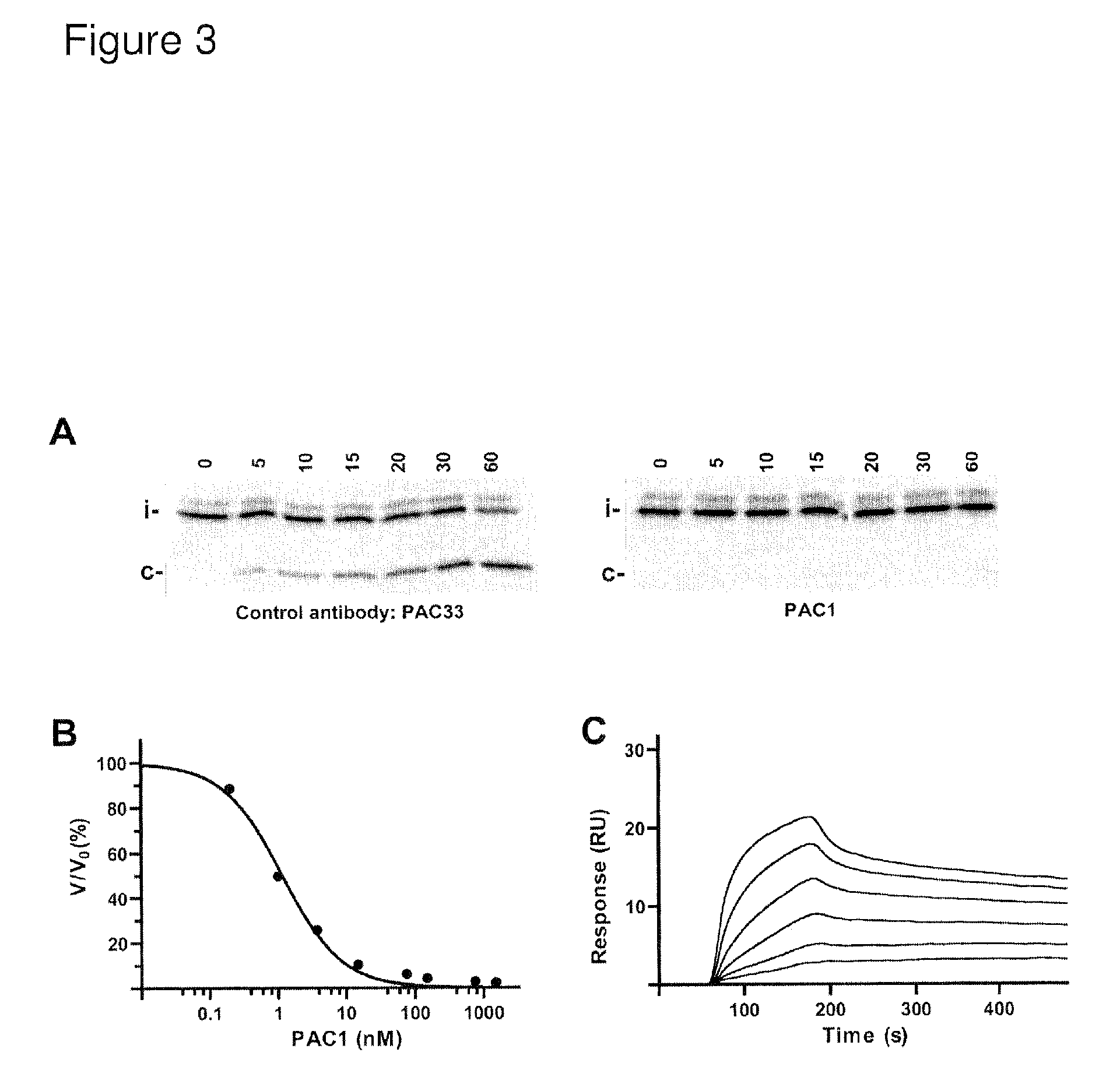Selective exosite inhibition of PAPP-A activity against IGFBP-4
a pappa activity and selective inhibition technology, applied in the field of protease inhibitors, can solve the problem of generating igfbp fragments with diminished affinity for ig
- Summary
- Abstract
- Description
- Claims
- Application Information
AI Technical Summary
Benefits of technology
Problems solved by technology
Method used
Image
Examples
example 1
Plasmid Constructs
[0632]An expression construct encoding a His-tagged form of the C-terminal portion of murine PAPP-A, starting at module CCP1 (FIG. 1), was made by overlap extension PCR. Briefly, a nucleotide fragment encoding a signal peptide (MVLLTAVLLLLAAYAGPAQS) was derived by PCR from a construct encoding human IGFBP-5 (Gen Bank accession number NP—000590). The primers were 5′-GACGAAGCTTATGGTGTTGCTCACCGCGGT-3′ (an introduced HindIII site is shown in bold), and 5′-TTCTGGGCAGTCGGCGCTCTGGGCCGGCCCCGCAT-3′ (nucleotides encoding residues 1129-1133 of murine PAPP-A are underlined. The numbering of the 1545-residue murine PAPP-A is according to (Soe, R., Overgaard, M. T., Thomsen, A. R., Laursen, L. S., Olsen, I. M., Sottrup-Jensen, L., Haaning, J., Giudice, L. C., Conover, C. A., and Oxvig, C. (2002) Eur. J. Biochem. 269(8), 2247-2256) The numbering of the 1547-residue human PAPP-A is according to (Kristensen, P., and Winter, G. (1998) Fold Des 3(5), 321-328). A second nucleotide fra...
example 2
[0655]Binding of PAC1 and PAC2 to mutants of human PAPP-A, in which single amino acid residues within the C-terminal 70 residues have been substituted into alanine:
[0656]
PAC1PAC2D1484Ano bindingno bindingD1499Ano bindingno bindingD1502Ano bindingno bindingK1509AbindingbindingD1521Aweak bindingweak bindingD1525AbindingbindingR1529Ano bindingno bindingD1530Ano bindingno bindingE1535Abindingbinding
example 3
[0657]Binding of PAC5 to fragments of human PAPP-A (SEQ ID NO:1).
[0658]“PA 1-950” is a fragment of PAPP-A comprising amino acid residues 1-950. “PA 937-1547” is a fragment of PAPP-A comprising amino acid residues 937-1547. “PA 1-599” is a fragment of PAPP-A comprising amino acid residues 1-599.
[0659]
Mapping of PAC5 binding to PAPP-APA 1-950bindingPA 937-1547no bindingPA 1-599no binding
PUM
| Property | Measurement | Unit |
|---|---|---|
| time period | aaaaa | aaaaa |
| time period | aaaaa | aaaaa |
| time period | aaaaa | aaaaa |
Abstract
Description
Claims
Application Information
 Login to View More
Login to View More - R&D
- Intellectual Property
- Life Sciences
- Materials
- Tech Scout
- Unparalleled Data Quality
- Higher Quality Content
- 60% Fewer Hallucinations
Browse by: Latest US Patents, China's latest patents, Technical Efficacy Thesaurus, Application Domain, Technology Topic, Popular Technical Reports.
© 2025 PatSnap. All rights reserved.Legal|Privacy policy|Modern Slavery Act Transparency Statement|Sitemap|About US| Contact US: help@patsnap.com



